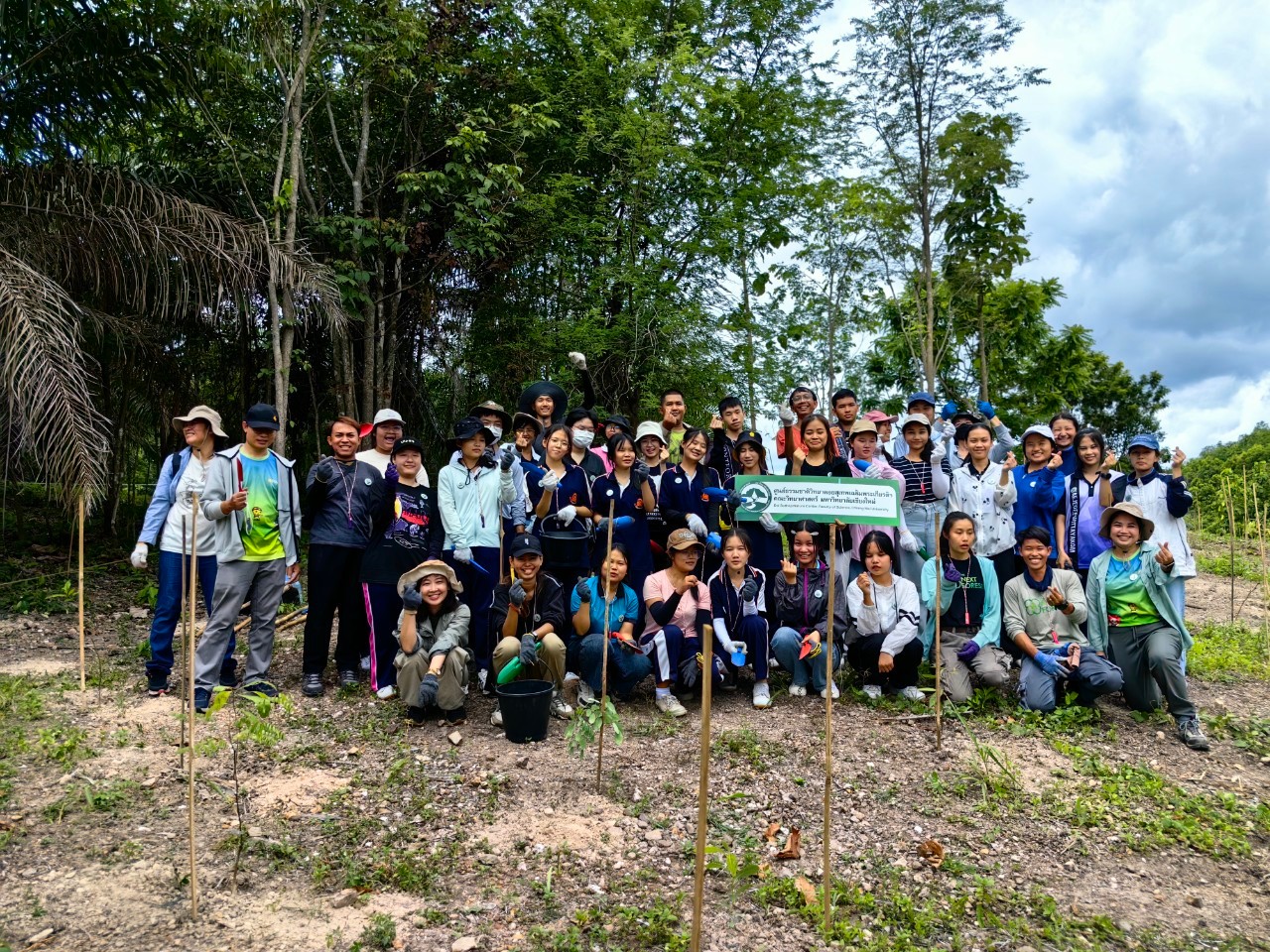Various units and divisions within Chiang Mai University (CMU) regularly organize activities focused on the restoration and conservation of nature. This endeavor is consistent with the University’s mission to maintain and rejuvenate the environment, recognizing its critical importance for the well-being and sustainability of all forms of life. Furthermore, these initiatives aim to cultivate environmental awareness and foster active participation in conservation efforts among students, personnel, and the general public.
Restoring Bamboo-Deciduous Forest to a burnt site at Pong Yaeng Nork

Early in 2024, wildfire swept through a bamboo-deciduous forest at Pong Yaeng Nork, Mae Rim, within Doi Suthep-Pui National Park, destroying much of the existing vegetation. At the request of the park authority, Chiang Mai University’s Forest Restoration Research Unit (FORRU-CMU) launched an ambitious project to restore the forest back to its original condition. Tree planting and associated activities were funded by the Plant Genetic Conservation Project under the Royal Initiative of HRH Princess Maha Chakri Sirindhorn with additional assistance from Chiang Mai University’s Research Group fund, whilst maintenance and monitoring are also being supported by SIG.
The project aims to not only re-establish bamboo-deciduous forest to enhance biodiversity, but also to test species suitability to this harsh lowland site and their response to various fertilizer treatments. The project planted 8.4 rai of land, with a total of 3,500 trees in the rainy season of 2024. The site has also become an outdoor classroom for local schools, engaging students in hands-on conservation efforts through the Young Forest Restorers (YFR) program.
A mix of 33 native tree species were carefully selected to accelerate forest recovery. The first 10 were planted in replicated experimental plots to test fertilizer effects, while the remaining 23 species were planted as a buffer zone around the experimental plots. Species were chosen based on FORRU’s previous data from testing species on bamboo-deciduous forest sites.
Aerial surveys were performed with a drone to gauge pre-existing tree cover. This helps with project planning and provides a baseline, against which to assess subsequent recovery. Furthermore, trained volunteers and students recorded tree height, root collar diameter and survival rates during ground surveys.
Early Results
- High Survival Rate – After the first rainy season, 93% of trees survived, with six species showing over 75% survival, indicating strong site suitability. Top performers were Erythrina stricta and Balakata baccata.
- Minimal Fertilizer Effect – surprisingly higher fertilizer doses did not significantly improve performance, suggesting our original protocol of applying 50g per tree each time is already sufficient.
Why This Project Matters
- Restoring a Critical Ecosystem – Bamboo-deciduous forests support unique biodiversity and play a vital role in watershed protection.
- Engaging Local Communities – The project fosters environmental stewardship by involving local students, volunteers and national park rangers.
- Advancing Science – By testing tree species and fertilizer treatments, we gain valuable insights to improve future reforestation efforts.
CMU Hariphunchai Reforestation Activity

Educational institutions, private companies, and volunteers collaboratively participated in a reforestation activity, successfully planting 2,635 seedlings across an area of 6 rai (approximately 2.4 acres) on July 13, 2024. The event took place at the Native Plant Collection and Agroforestry Plot, Chiang Mai University Hariphunchai Education Center, Lamphun Province.
The event was organized by the Doi Suthep Nature Center in collaboration with the Forest Restoration Research Unit (FORRU) of the Faculty of Science, Chiang Mai University; the Royal Initiative Project on Plant Genetic Conservation under the patronage of Her Royal Highness Princess Maha Chakri Sirindhorn – Chiang Mai University (RGP-CMU); and The Next Forest Co., Ltd.
The planting of 2,635 seedlings on 6 rai was conducted as part of the “Project for the Assessment of Carbon Sink, Carbon Offset, and Carbon Credit Sale Potential from Forestry and Green Areas within the Chiang Mai University Hariphunchai Education Center, Lamphun Province.”
The 150 volunteers comprised:
- Students from schools and universities in Chiang Mai, Lamphun, and neighboring provinces.
- Students and faculty from the Environmental Science Program (International Program), Faculty of Science, Chiang Mai University.
- Personnel from the Mae Fah Luang University Botanical Garden.
- Employees of DRIESSEN CATERING EQUIPMENT Co., Ltd.
- Factory workers in Lamphun Province, and the general public.
Participants gained hands-on experience in the practical steps of forest restoration using the Framework Species Method. They collaboratively planted native and fruit tree seedlings and applied fertilizer to ensure optimal growth and successful establishment.
Source
